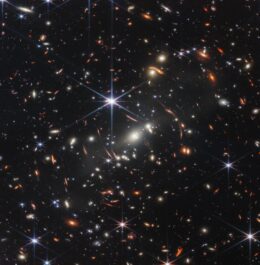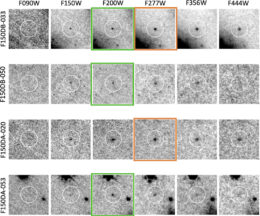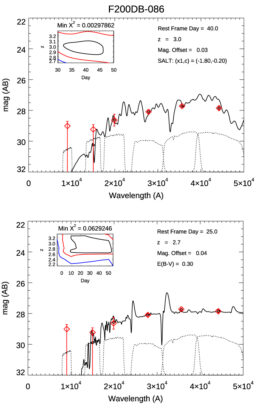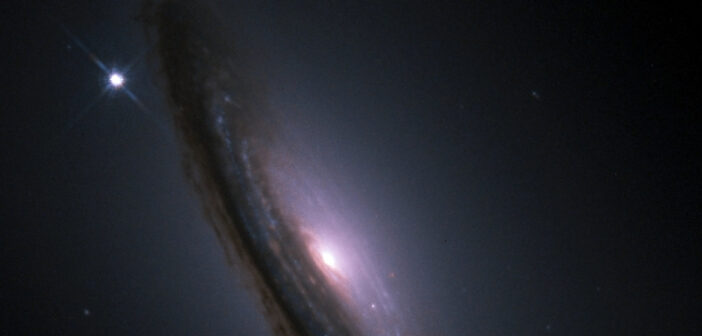JWST observations of abundant galaxies in the early universe have the potential to upend our theories of when the first galaxies formed. New research suggests that some of these candidate galaxies are actually individual supernovae, slightly easing — but not eliminating — the tension between theory and reality.
Eyeing Early Galaxies

JWST image of the galaxy cluster SMACS J0723.3-7327. [NASA, ESA, CSA, STScI]
Now, researchers are taking a closer look at these purported “high-redshift” galaxies, testing whether some of them are actually less-distant galaxies reddened with dust or even single objects in our own galaxy, like brown dwarfs. In a recent research article, a collaboration led by Haojing Yan (University of Missouri) has proposed a new type of object that might be contaminating our high-redshift galaxy samples: extragalactic supernovae.

Examples of four point-like galaxy candidates as seen in six JWST filters. The wavelength range of the observations increases from left to right. Click to enlarge. [Adapted from Yan et al. 2023]
Galactic or Stellar?
Yan and collaborators hunted for high-redshift galaxies in the first JWST image ever released, an expansive scene showing the galaxy cluster SMACS J0723.3-7327 (SMACS J0723 for short). Yan’s team collected a sample of nearly 90 candidate high-redshift galaxies with potential redshifts ranging from 12.7 to 24.7, which corresponds to roughly 340 to 130 million years after the Big Bang. Upon inspection, 10 of these sources appeared point-like, more like stars than galaxies.
The team suggested that these point-like “galaxies” might instead be extragalactic supernovae. To test this theory, they attempted to fit the photometric JWST observations with models of Type Ia (thermonuclear runaway) and Type II (core-collapse) supernovae.
Still in Disagreement

An example of the model fitting. This source, F200DB-086, is well fit by both a Type Ia supernova (top) and a Type IIP supernova (bottom) model. Click to enlarge. [Adapted from Yan et al. 2023]
Ultimately, as is often the case, more data are needed to inspect these mysterious sources further. The team suggested that revisiting the SMACS J0723 field should clarify the situation, confirming that the objects are supernovae by watching them fade over time. And as for our understanding of galaxy growth in the early universe, the solution is still unclear — removing a handful of supernova sources still leaves more galaxies than our theories can handle.
Citation
“Pointlike Sources among z > 11 Galaxy Candidates: Contaminants due to Supernovae at High Redshifts?,” Haojing Yan et al 2023 ApJL 947 L1. doi:10.3847/2041-8213/acc93f

